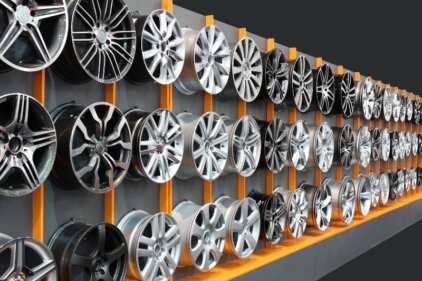Flying cars have long been a fascination in science fiction, captivating our imaginations with visions of a futuristic world where we can effortlessly glide through the skies. The idea of flying cars has been romanticized in popular culture, from movies like “Back to the Future” to novels such as “Blade Runner.” However, the concept of flying cars is not just a figment of our imagination; it has a historical background and has seen significant advancements in technology. In this article, we will explore the myth and potential of flying cars, delving into their history, the advancements in technology, the potential benefits, the challenges they face, and the current projects and prototypes. By the end, we will ponder the question: will flying cars become a reality?
Historical background of flying cars
The idea of flying cars dates back to the early 20th century. In 1917, Glenn Curtiss, an American aviation pioneer, introduced the “Curtiss Autoplane,” which was a combination of a car and an airplane. Although it was not a true flying car, it laid the foundation for future innovations in this field. Over the years, various inventors and engineers experimented with the concept, but it was not until the 1950s that significant progress was made.
During the 1950s and 1960s, there was a surge of interest in flying cars. Companies like Molt Taylor’s Aerocar and Henry Smolinski’s Mizar attracted attention with their prototypes. These early attempts at flying cars were based on the idea of a roadworthy vehicle that could also take to the skies. However, these projects faced numerous challenges, including engineering complexities, safety concerns, and regulatory hurdles. As a result, the dream of flying cars remained elusive.
The myth of flying cars
Despite the lack of practical applications, the myth of flying cars continued to capture our imagination. Popular culture played a significant role in perpetuating this myth, as movies, books, and TV shows depicted a future where flying cars were commonplace. However, the myth often fails to consider the practical realities of implementing such a transportation system. The challenges of infrastructure, air traffic control, and safety regulations are often overlooked in these fantastical portrayals.
The myth of flying cars also raises questions about affordability and accessibility. Will flying cars be limited to the wealthy elite, or will they be accessible to the general public? Additionally, the environmental impact of flying cars must be considered. While they may offer convenience and speed, they could also contribute to pollution and noise pollution. Therefore, it is crucial to separate the myth from the reality and explore the potential benefits and drawbacks of flying cars in a pragmatic manner.
Advancements in technology for flying cars
Despite the challenges, significant advancements in technology have brought us closer to the realization of flying cars. Innovations in electric propulsion, lightweight materials, and autonomous systems have revolutionized the aerospace industry, making the concept of flying cars more feasible than ever before.
Electric propulsion is one of the key technological advancements that could enable flying cars to become a reality. Electric motors are more efficient, quieter, and environmentally friendly compared to traditional combustion engines. Companies like Tesla and Volocopter are already developing electric aircraft and air taxis, which could serve as stepping stones towards the widespread adoption of flying cars.
Furthermore, advancements in lightweight materials, such as carbon fiber composites, have made it possible to build vehicles that are both strong and lightweight. This is crucial for flying cars, as they need to be aerodynamic and energy-efficient. Lightweight materials also contribute to the safety of flying cars, as they reduce the risk of damage in the event of a crash.
Autonomous systems are another technological advancement that could play a vital role in the development of flying cars. Autonomous flying cars could potentially alleviate concerns about human error and improve safety. Companies like Uber and Airbus are already investing in autonomous air taxi projects, showcasing the potential for this technology.
Potential benefits of flying cars
Flying cars have the potential to revolutionize transportation and offer numerous benefits. One of the most significant advantages is the ability to bypass traffic congestion. With the ability to fly over obstacles, flying cars could significantly reduce travel times, especially in urban areas. This could have a positive impact on productivity and quality of life.
Flying cars could also provide access to remote areas that are currently difficult to reach. They could be used for emergency medical services, disaster relief, and transportation to remote communities. Moreover, flying cars could enhance the efficiency of logistics and transportation networks, making it easier to transport goods and reduce delivery times.
From an environmental perspective, electric flying cars could help reduce greenhouse gas emissions and air pollution. With the transition to renewable energy sources, flying cars could become a sustainable mode of transportation, minimizing the reliance on fossil fuels.
Challenges and obstacles to the development of flying cars
While the potential benefits of flying cars are enticing, there are significant challenges and obstacles that must be overcome for them to become a reality. One of the primary concerns is safety. Flying cars would introduce a new level of complexity to the transportation system, requiring careful consideration of air traffic management, collision avoidance systems, and emergency protocols. Developing robust safety regulations and ensuring compliance would be crucial.
Infrastructure is another major challenge. Flying cars would require the development of new landing pads, charging stations, and maintenance facilities. Integrating these new infrastructure requirements into existing urban landscapes would be a complex task.
Furthermore, public acceptance and trust in flying cars would need to be established. The general population may have reservations about the safety and noise pollution associated with flying cars. Addressing these concerns through education and demonstration of safety measures would be essential.
Current projects and prototypes of flying cars
Despite the challenges, numerous companies and organizations are actively working on developing flying cars. One notable example is the PAL-V Liberty, a Dutch company that has created a vehicle that can transition between driving and flying modes. Another remarkable project is the AeroMobil, a Slovakian company that has developed a flying car prototype with vertical takeoff and landing capabilities.
Additionally, technology giants like Uber and Google are investing in the development of autonomous air taxis. Uber’s Elevate program aims to launch a network of electric vertical takeoff and landing (eVTOL) aircraft for urban transportation. Google’s parent company, Alphabet, has its own subsidiary called Kitty Hawk, which is focused on developing electric flying vehicles.
These current projects and prototypes demonstrate the progress that has been made in the field of flying cars. While they are not yet available for widespread use, they serve as promising indicators of what the future may hold.
Regulations and legal considerations for flying cars
The development and deployment of flying cars would require careful consideration of regulations and legal frameworks. As flying cars would operate in both airspace and on the ground, they would need to comply with aviation regulations as well as traffic laws. Governments and regulatory bodies would need to work closely with the industry to establish clear guidelines and safety standards.
Air traffic management systems would also need to be adapted to accommodate flying cars. This would involve integrating flying cars into existing air traffic control systems and developing new protocols to ensure safe and efficient operations. Cooperation between governments, aviation authorities, and technology companies would be essential in this regard.
Insurance and liability issues would also need to be addressed. Determining responsibility in the event of accidents or collisions involving flying cars would require new legal frameworks and insurance policies.
The future of transportation: Will flying cars become a reality?
The question of whether flying cars will become a reality is a complex one. While significant progress has been made in terms of technology and prototypes, there are still many challenges to overcome. Safety, infrastructure, regulations, public acceptance, and affordability are all crucial factors that need to be addressed.
However, the potential benefits of flying cars cannot be ignored. If the challenges can be overcome, flying cars could revolutionize transportation, offering faster commute times, increased accessibility, and reduced environmental impact.
It is difficult to predict the exact timeline for the widespread adoption of flying cars, but it is clear that the future of transportation holds exciting possibilities. As technology continues to advance and society evolves, the dream of flying cars may eventually become a reality.
Conclusion: The potential impact of flying cars on society
In conclusion, the concept of flying cars has fascinated us for decades, fueled by the myth and imagination perpetuated by popular culture. While the myth often overshadows the practical realities, significant advancements in technology have brought us closer to the realization of flying cars.
Despite the challenges and obstacles that lie ahead, the potential benefits of flying cars are substantial. From reducing congestion and travel times to enhancing accessibility and safety, flying cars could revolutionize transportation and have a positive impact on society.
However, for flying cars to become a reality, there must be a concerted effort from governments, regulatory bodies, and technology companies to address the challenges of safety, infrastructure, regulations, public acceptance, and affordability. Only through collaboration and innovation can we hope to see the skies filled with flying cars.
So, while the future of transportation may not be as depicted in science fiction, the potential of flying cars offers a tantalizing glimpse into a future where the boundaries of transportation are pushed to new heights.





